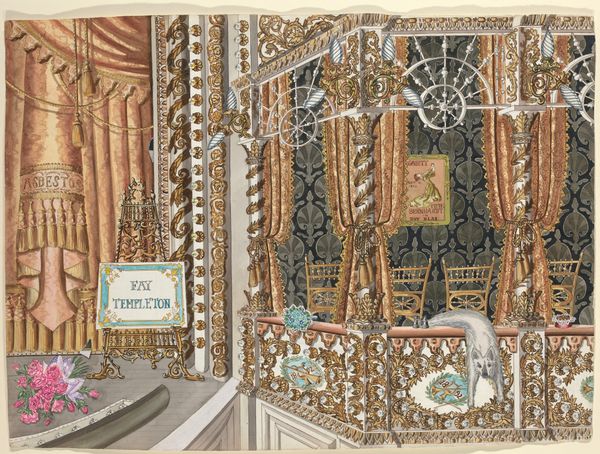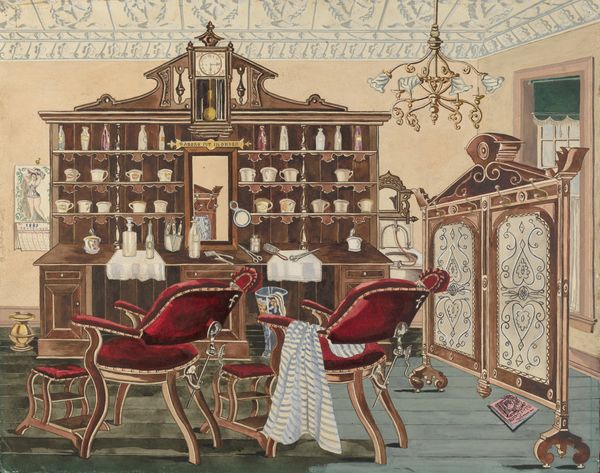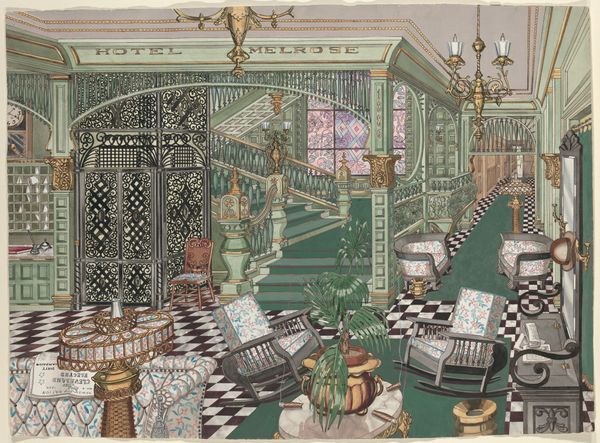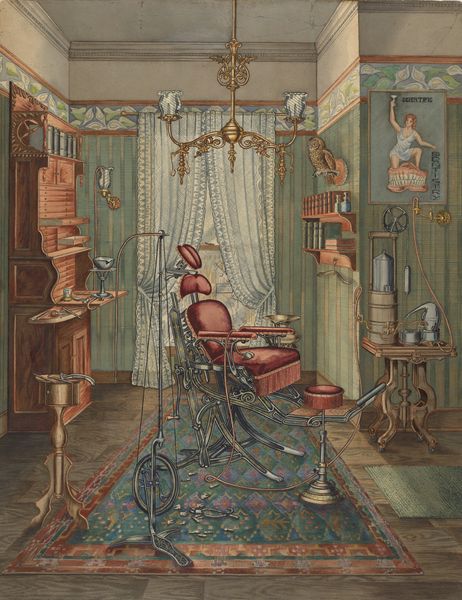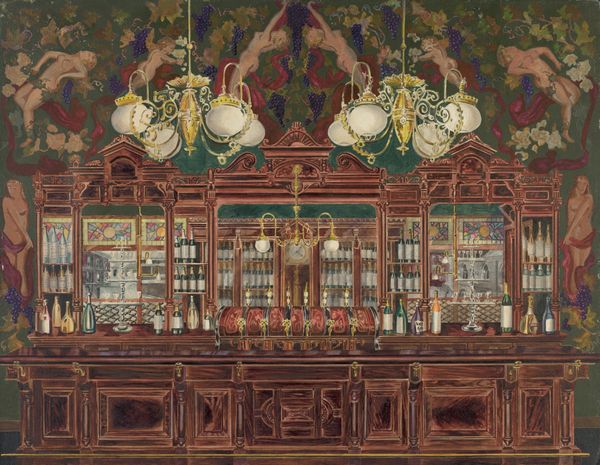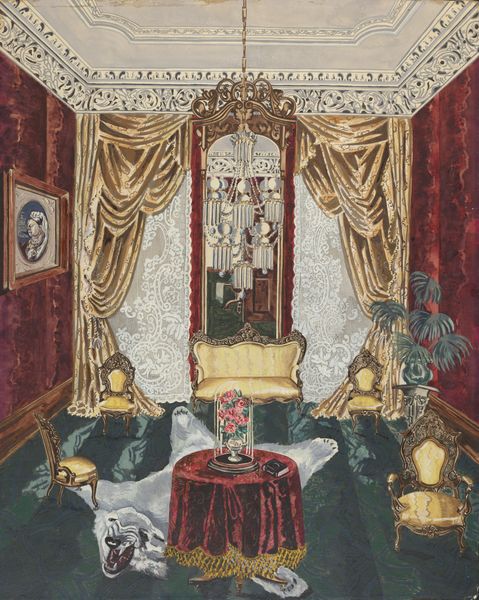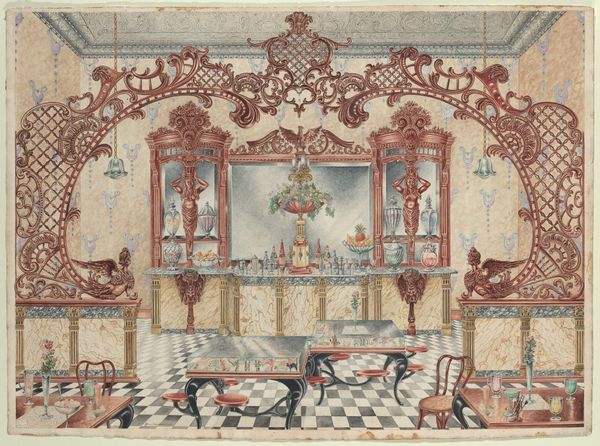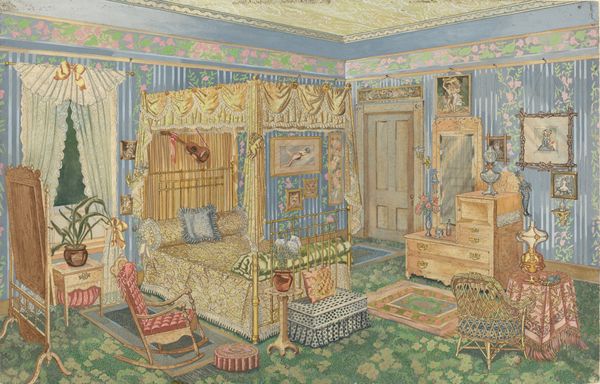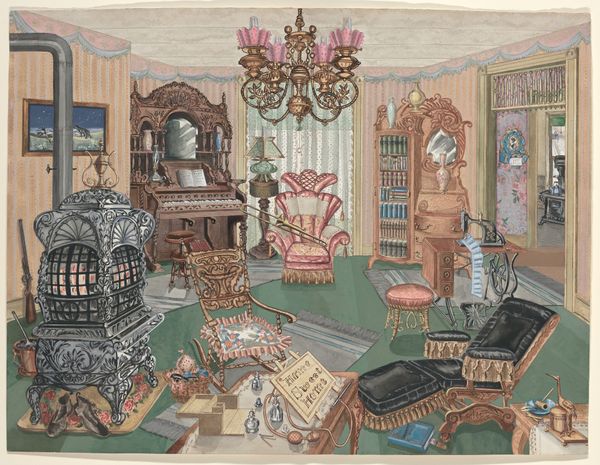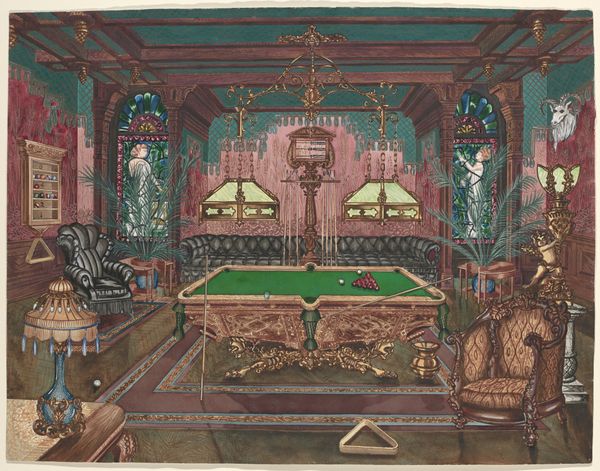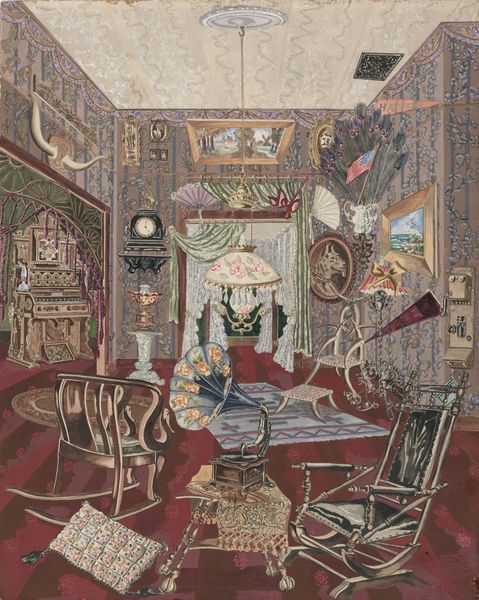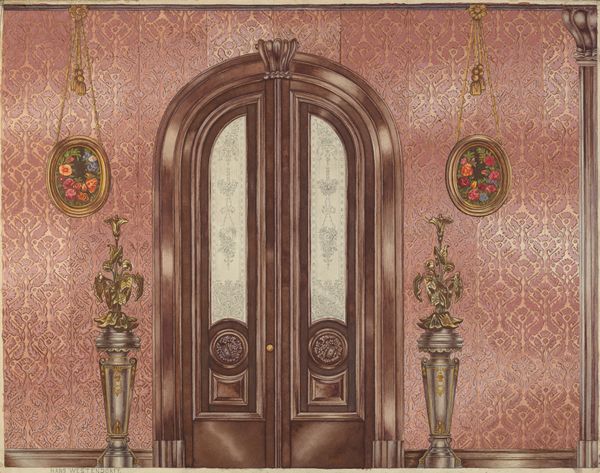
drawing, painting, watercolor
#
drawing
#
painting
#
figuration
#
watercolor
#
naive art
#
painting painterly
#
watercolour illustration
#
genre-painting
#
academic-art
#
decorative-art
#
watercolor
#
realism
Dimensions: overall: 45.1 x 57.5 cm (17 3/4 x 22 5/8 in.)
Copyright: National Gallery of Art: CC0 1.0
Curator: Well, here we have Perkins Harnly’s “Dentist’s Waiting Room,” created sometime between 1935 and 1942 using watercolor and drawing. Editor: My first thought is...claustrophobia, but make it fancy! It's a bit like being trapped in a grandmother's fever dream, isn’t it? So many patterns and objects, fighting for attention. Curator: That resonates! The sheer density of imagery is rather striking. Notice the mounted marlin above the table, almost like a strange trophy, then a deer head in the corner. Both feel totally out of context! Editor: They speak to the aspirational symbols of masculinity…strength, conquest, virility. I'm trying to figure out how they relate to the perceived emasculation inherent in that anxiety-inducing space, the dentist's office. Perhaps that is the key. What do you make of the mirror stating 'Private. Hours 9-5' where one might expect to see a reflection? Curator: The missing reflection—it’s a powerful detail, implying a loss of self in that moment. The promise of transformation, or perhaps a necessary sacrifice, hovers, doesn't it? What is sacrificed in that little room just out of our sight, and what is revealed? Editor: I wonder, too, about the deliberate 'wrongness' of it all, even within the visual language. The room is overwrought, but its iconography lacks the true symbols we would expect to find: the Aesculapian staff, say, or an image of a saint associated with healing. Instead, it's a jumble of social signifiers, subtly subverted and... satirized? Curator: Absolutely. Harnly presents us with a potent critique. This isn’t just a waiting room; it’s a symbolic space ripe for interpretation, playing with our cultural anxieties and perceptions of pain, status, and power. It’s as unnerving as it is aesthetically compelling. Editor: So, it leaves me considering the enduring anxiety inherent in places of necessary, sometimes painful transition. Places we imbue with our own cultural fears and hopes... Clever, I suppose.
Comments
No comments
Be the first to comment and join the conversation on the ultimate creative platform.

